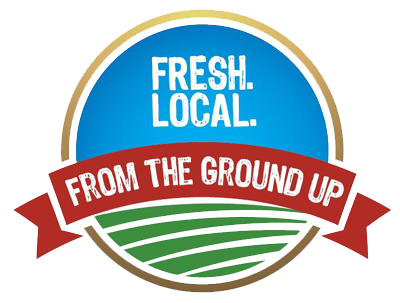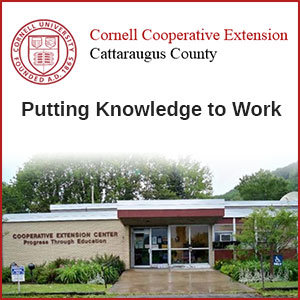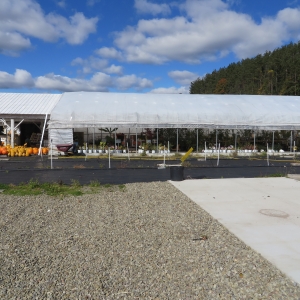Other Ag News:
WASHINGTON, Aug. 7, 2024 – The U.S. Department of Agriculture (USDA) today announces changes to the Farm Service Agency’s (FSA) Farm Loan Programs, effective Sept. 25, 2024 — changes that are intended to increase opportunities for farmers and ranchers to be financially viable.
WASHINGTON, August 6, 2024 — Today, the U.S. Department of Agriculture’s Forest Service is announcing a funding opportunity through the hazardous fuels transportation assistance program to reduce wildfire risk, expand and create market opportunities, and support local jobs. This program is available to local businesses and partners that remove hazardous fuels from national forests and transport the material to be processed for wood products or services.
Yasmin Miranda-Mandujano is one of 14 students chosen for an internship with the U.S. Department of Agriculture (USDA) High School Equivalency Program/College Assistance Migrant Program (HEP/CAMP). Yasmin is a sophomore at Madera Community College in California, majoring in business administration.
WASHINGTON, Aug. 5, 2024 – The U.S. Department of Agriculture will make an additional $300 million available through the Regional Agricultural Promotion Program to help grow export markets for American farm and food products around the world, Deputy Agriculture Secretary Xochitl Torres Small announced today.
WASHINGTON, August 1, 2024 – On Wednesday, July 31, the Biden-Harris Administration announced it has issued payments to eligible applicants under the Inflation Reduction Act’s Discrimination Financial Assistance Program (DFAP). Leaders across the country widely praised the Administration’s action and the critical step in advancing President Biden’s Executive Order on advancing equity in federal government programs.
Editor’s Note: This post is part of a multi-part series exploring some of the key sustainable agriculture and food systems challenges that the farm bill can address. Through a series of posts comparing the House and Senate Agriculture Committees’ proposals, we provide an assessment of how each chamber’s bill would address a given challenge, and our recommended path forward. Our first post focused on local and regional market access can be found here.
It is imperative that the next farm bill strengthen the farm safety net by helping farmers to access crop insurance coverage, which is becoming increasingly important amidst worsening droughts, floods, frosts, and other storms or causes for loss. Unfortunately, there is a wide gap separating the House and the Senate in their approaches to this challenge. This post compares the proposals on the table and concludes with key components that must be included in final farm bill passage.
BackgroundData from the United States Department of Agriculture (USDA) reveals that only 13 percent of farms were enrolled in an insurance plan in 2022. Meanwhile, most acres planted to major commodities are insured and the largest, highest-income farms benefit most from government subsidies to purchase insurance. While smaller farmers do adopt practices to manage risk on-farm, including diversification or products and markets, many would still enroll in an affordable and reliable safety net if it were an option. But barriers in program design and implementation often prevent small to mid-sized, beginning, specialty crop, and diversified farmers from accessing crop insurance.
Read the National Sustainable Agriculture Coalition’s (NSAC) report, Unsustainable: State of the Farm Safety Net, for more information on common barriers to crop insurance access.
Senate ProposalChairwoman Stabenow’s (D-MI) framework offers a plethora of meaningful provisions that would expand access to the federal crop insurance program to farmers without coverage.
Notably, this includes provisions from the Whole-Farm Revenue Protection (WFRP) Program Improvement Act and the Save Our Small (SOS) Farms Act, which are designed to streamline access to WFRP and the Noninsured Crop Disaster Assistance Program (NAP). WFRP and NAP are the only tools explicitly designed to cover smaller and diversified operations, and the provisions in this bill – which include streamlined paperwork, expanding the Micro Farm option, and establishing an on-ramp from NAP to WFRP – are key to addressing outstanding barriers that still prevent farmers from enrolling.
The Senate framework also authorizes new insurance pilot programs, including a responsive weather index-based pilot which would trigger an indemnity payment within 30 days of a federally declared natural disaster. This idea, first proposed in the Withstanding Extreme Agricultural Threats by Harvesting Economic Resilience (WEATHER) Act, would be a complement to improving WFRP and NAP and help address the dramatic gap in access to the safety net.
In recognition that disasters and extreme weather events are becoming more frequent, the bill authorizes USDA to continue building on the Pandemic Cover Crop Program, which granted farmers a premium discount of $5 per acre planted to cover crops. While there is no specific dollar amount, the language does authorize USDA to match complementary programs administered by states. It further expands the list of eligible practices to include crop rotations and leaves room to include additional practices with proven risk-reducing benefits.
In addition, the Federal Crop Insurance Corporation is directed to review its methodologies to measure emerging risks in agriculture, including assessment of the risk posed by worsening weather and changes in crop genetics. This is an important move to safeguard the program’s long-term stability and uphold its actuarial soundness.
The bill would also expand premium discounts to beginning farmers. Currently, USDA considers farmers with up to 5 years of experience to be beginning farmers eligible for a 10 percent premium discount when purchasing crop insurance. The language, taken from the Crop Insurance for Future Farmers Act, modifies the definition of beginning farmers as recognized in the federal crop insurance program to include those with up to 10 years of experience – aligned with all other USDA programs – and raises the discount to a maximum 15 percent.
Finally, a series of consequential provisions would help small farmers to find agents willing to sell them crop insurance – one of the biggest outstanding barriers to access. Currently agents are compensated partly on size of the insurance premium; it is thus more profitable to sell insurance to larger farms, with higher premiums, rather than to small and non-conventional farmers for whom tailoring a policy can be especially time-consuming. The needle will not move to expand access to crop insurance if agents are not also willing to sell these products. While the bill does not go so far as the sweeping Insuring Fairness for Family Farmers Act, it includes updates to more fairly compensate agents for selling more complex policies such as WFRP.
House ProposalWhile the Senate framework invests in expanding crop insurance access as a key risk management tool for all farms, the House farm bill actively sidesteps the issue.
The bill’s most concrete provision and only point of alignment between the chambers is an expansion of the beginning farmer discount, as discussed above. This is a longtime NSAC priority that could help some producers for whom cost is the prohibitive barrier to purchase crop insurance coverage. But unlike the framework in the Senate, the House mark does not then propose any complementary provisions to remove more fundamental barriers rooted in program design and bureaucratic red tape.
No discount alone can overcome challenges with paperwork or agent disincentives, and should not be prioritized beyond these more foundational reforms. While the bill does offer some additional reimbursements to incentivize crop insurance agents to sell plans to cover specialty crops, the text appears to exclude WFRP.
Rather than take steps to actively improve WFRP for small and direct-to-consumer producers, the bill would require annual review of the program. This is already standard practice. In fact, a comprehensive analysis of WFRP and insurance options for direct-to-consumer producers commissioned by USDA recommends many of the same provisions long-championed by NSAC, and many are included in the Senate framework.
The bill also establishes a Specialty Crop Advisory Committee to inform the development and expansion of crop insurance. But without conditions that any of its appointees represent beginning, small, diversified, or organic farmers, it will only reflect the specific needs of large-scale, monoculture specialty crop farms.
The Final PathCongress has the opportunity to write a farm bill which strengthens crop insurance by expanding access to all farmers who want it. While the Senate and House are far apart on whether to prioritize this issue, the final farm bill must:
- address fundamental barriers rooted in the design and implementation which make WFRP and NAP difficult for farmers to access;
- incentivize crop insurance agents to sell products to small, diversified, and direct-to-consumer producers; and
- take steps to incorporate the value of adopting risk-reducing practices in development of crop insurance policies and premium costs.
The Senate bill contains many provisions that move in this direction, while the House bill includes no meaningful reforms. Farmers are calling on Congress to act, not to commission further studies of well-defined challenges for which solutions already exist. Ultimately, NSAC’s vision to improve crop insurance is to invest in expanding coverage options while helping farmers to build long-term, on-farm resilience against losses. This would reduce taxpayer costs to administer the federal crop insurance program, which have skyrocketed in recent years to accommodate record loss. Congress will trap itself in a cycle of expensive bandages so long as it misses the opportunity to adopt this sustainable approach to farm risk management policy.
The post Path to a New Farm Bill: Crop Insurance Access appeared first on National Sustainable Agriculture Coalition.
WASHINGTON, Aug. 1, 2024 – Agriculture Secretary Tom Vilsack and U.S. Trade Representative Katherine Tai today announced the appointment or reappointment of 55 members to serve on seven agricultural trade advisory committees.
Growing up in a diverse community in Manhattan, USDA Equity Commission’s Elizabeth Lower-Basch understood the importance of civil rights, unions, and equity at a young age. Inspired by her upbringing, Lower-Basch went on to earn a master’s degree in public policy and began her career with the U.S. Department of Health and Human Services (HHS).
WASHINGTON, Aug. 1, 2024 – Agriculture Secretary Tom Vilsack announced the U.S. Department of Agriculture (USDA) will invest $400 million with at least 18 irrigation districts to help farmers continue commodity production while also conserving water across the West.
Pages
Signup for the Ag Newsletter
Get the freshest farm news, events and updates from in and around Cattaraugus County, NY at least once a month! Go signup!
Other ways to stay connected:
Get Involved in Farming
Resources for Starting a Farm in Cattaraugus County
Profile of Cattaraugus County soils
Agriculture Career Exploration
Questions about farming? Find out Who to Call











